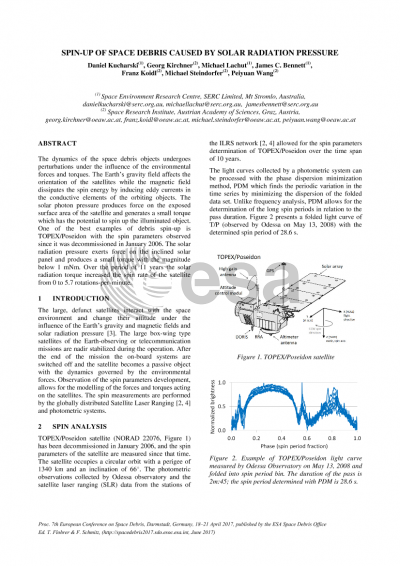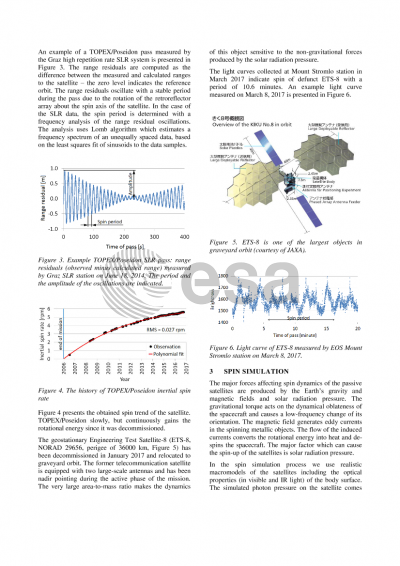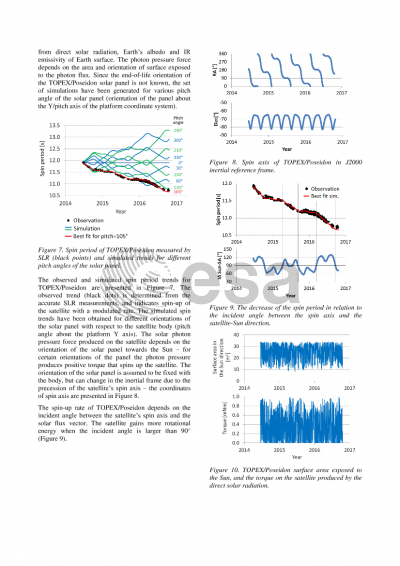Document details

Abstract
The dynamics of the space debris undergoes perturbations due to the forces and torques exerted on the orbiting objects by the space environment. The Earth’s gravity field affects the inertial orientation of the satellites while the magnetic field dissipates the spin energy by inducing the eddy currents in the conductive elements of the orbiting objects. The solar photon pressure produces force on the exposed surface area of a satellite and generates torque about its center-of-mass. The magnitude of the torque is relatively small, but it accumulates over time and has the potential to spin-up the passive debris objects located at all altitudes – from LEO to GEO. The analysis of the satellite laser ranging and the optical observations of defunct satellites Topex (altitude of 1340 km), GLONASS-41 (19140 km) and Compass-G2 (35300 km) reveals the spin-up effects caused by the solar photon pressure. The torque produced on the satellites has the amplitude of a few milli-Nm and oscillates over time due to the change of the satellite orientation towards the Sun. The spin of the sun-synchronous debris objects such as Envisat, ERS-1 and ERS-2 is not perturbed by the solar radiation pressure (the torque cancels out) but is affected by the strong interaction with the Earth’s magnetic field which produces the counter-spin torque in the range of nano-Nm.
The presentation will explain the physical process and conditions that are responsible for the observed gain of the spin energy by the space debris objects.
Preview





